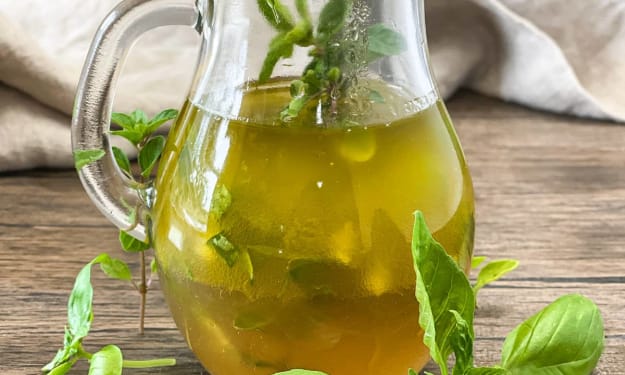How AI might improve the nutritional consistency of breast milk donated by humans
An optimization model that enhances nutritional content and cuts the time required to create milk bank recipes by 60% has been developed by researchers under the direction of Timothy Chan, a professor of engineering at the University of Toronto.

Under the direction of Professor Timothy Chan, a group of engineers at the University of Toronto is using machine learning to optimize the macronutrient composition of recipes for pooled human donor milk.
In a recent publication that was published in Manufacturing and Systems Operations Management, the researchers present their data-driven optimization paradigm.
Chan and his colleagues collaborated with Dr. Debbie O'Connor, a professor at the Temerty Faculty of Medicine, and the Rogers Hixon Ontario Human Milk Bank at Mount Sinai Hospital, which supplies donor milk to premature and ill babies who are hospitalized throughout Ontario.
Many hospitalized infants do not receive their full supply of mother's milk for a variety of reasons. Human donor milk can be lifesaving in this situation, according to Dr. Sharon Unger, a neonatologist and the medical director of the Rogers Hixon Ontario Human Milk Bank. It especially helps shield preterm infants from the potentially fatal bowel disease necrotizing enterocolitis.
"Dr. Chan's new program helps to guarantee that every batch of human donor milk satisfies preterm infants' caloric and protein requirements."
When pooling donor milk, many milk banks—including Mount Sinai's—currently rely on individual judgment. This makes it extremely difficult to consistently produce donor milk products with enough macronutrients for sick and premature newborns in neonatal intensive care units.
Without a set process, creating these recipes takes a lot of time, according to Chan. Even though research indicates that milk from donors who give birth soon tends to be higher in protein, our method offers a reliable estimate of the actual macronutrient content, enabling milk bank staff to make more informed pooling decisions.
Since milk banks are frequently nonprofit organizations with tight budgets, a low-cost way to get a reliable, nutrient-balanced product might be helpful for the whole industry.
Every milk sample at a milk bank can have its precise macronutrient content measured using a device called a human milk analyzer. However, only half of all milk banks in North America have one of these devices due to their high cost and extensive regulatory approval requirements. Moreover, it is an expensive, labor- and resource-intensive task to analyze each donation.
Lead study researcher Rachel Wong states, "Our data-driven framework uses an artificial intelligence model to predict the macronutrient content of each donation, bypassing the need for a device to analyze the donor milk."
Additionally, we can improve the consistency of the macronutrient content in the donor milk product by employing an optimization model to determine which donations to combine into one pool.
One year of implementation trial at the Rogers Hixon milk bank was part of the multi-phase study to see if AI-informed models could help close the gap.
Initially, the researchers gathered the required information to build an optimization model that would generate recipes based on macronutrient requirements—that is, the required amounts of protein and fat—and a machine learning model that would forecast the macronutrient content of the combined recipes.
By using an optimization model to choose which donations to combine into a single pool, we can also increase the consistency of the macronutrient content in the donor milk product.
The multi-phase study included a one-year implementation trial at the Rogers Hixon milk bank to see whether AI-informed models could help close the gap.
In order to create an optimization model that would produce recipes based on macronutrient requirements—that is, the necessary amounts of fat and protein—and a machine learning model that would predict the macronutrient content of the combined recipes, the researchers first gathered the necessary data.
"During the COVID-19 pandemic, the amount of donations varied according to the provincial restrictions; there was an unparalleled surge in both the quantity and quantity of donations during the lockdown periods.
"In order to make sure that we followed the milk bank's operating protocols, we also needed to modify the AI decisions that had previously been suggested."
The final stage of the research involved monitoring the functioning of the milk bank for a period of six months and assessing the levels of fat, protein, and bacteria in the combined recipes.
The pooled milk recipes were developed by the milk bank over the course of the next six months using the data-driven optimization framework. In order to determine which recipes satisfied the macronutrient targets, the researchers compared the optimized recipes to the earlier ones at the end of the year.
"We discovered that, without compromising other factors like an increase in bacteria, our pooled recipes met the bar for protein and fat simultaneously up to 75% more often," says Chan. "And creating the recipes took us 60% less time."
Preterm and sick babies benefit further from the team's optimized recipes because their digestive systems are still developing and it's especially important to make sure the milk they're drinking doesn't contain an excessive amount of fat or protein.
In order to determine whether their models can optimize other nutrients found in human donor milk, Chan's team is currently working to expand this research. The study has been recognized with an Excellence in Quality and Safety award from Sinai Health as well as the 2023 Pierskalla Best Paper Award from INFORMS.
"Our ultimate objective is to demonstrate the applicability of our tool to other milk banks," says Chan. "We want to create a system that can integrate with hospital systems to optimize recipes in a way that will benefit milk bank employees in the long run."
According to Wong, everyone on the team is appreciative of everyone who helped make the project possible.
"Without the mothers who give to the milk bank and the staff who put in so much effort to give donor milk to babies throughout Ontario and beyond, we couldn't have done this," the spokesperson claims.
In order to help milk banks throughout North America improve the consistency of the macronutrient content in their donor milk product, I hope that this research will offer a framework. The ultimate objective would be to observe a positive effect on the growth and developmental outcomes of the newborns who get this donor milk.






Comments
There are no comments for this story
Be the first to respond and start the conversation.